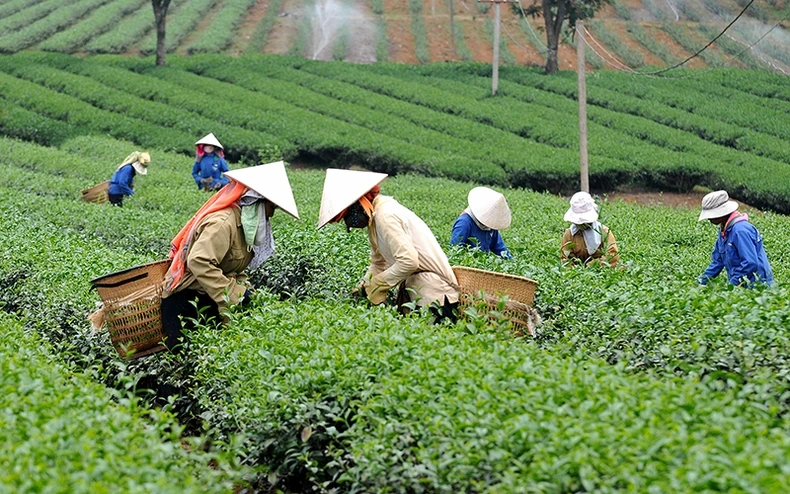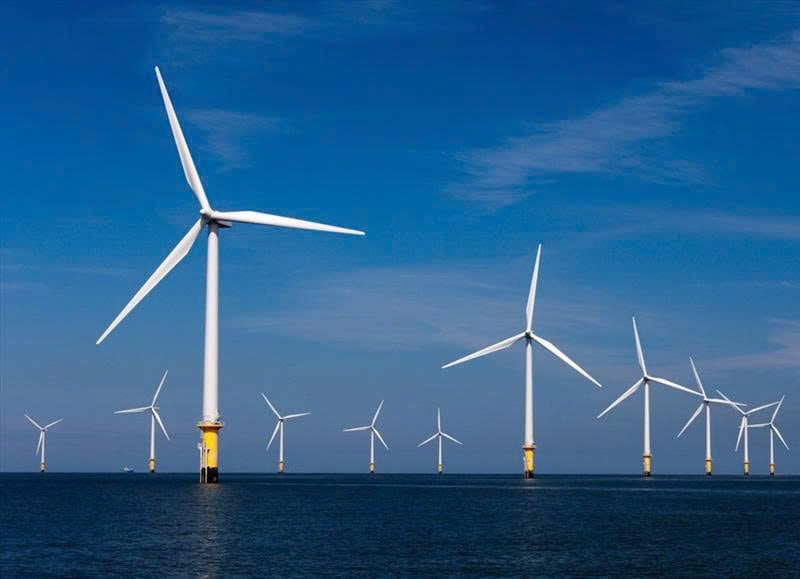Currently, the increasing demand of many countries for these products is an opportunity for Vietnam to increase production and export, creating a new position for the industries in the world market.
The main export markets for Vietnam’s industrial crop products are currently the European Union (EU), the US, Japan, and the Republic of Korea. In addition, Vietnam is also expanding exports to Southeast Asia, the Middle East, and India.
Global “heat”
According to the Import-Export Department (Ministry of Industry and Trade), the global pepper supply is currently very scarce, and demand is expected to continue to increase, so Vietnam’s pepper export prices have increased in most major markets since the beginning of the year.
In 2024, Vietnam’s pepper export prices reached a record high with an average price of 5,280 USD per tonne. Of which, black pepper prices reached 5,269 USD per tonne, up 51.4%, and white pepper reached 6,503 USD per tonne, up 29.9% compared to 2023. In the first two months of 2025, pepper exports decreased by 9.4% in volume but increased by nearly 52% in value, reaching 28,000 tonnes at 188.7 million USD.
The main export markets for Vietnamese industrial crop products are currently the European Union (EU), the US, Japan, and the Republic of Korea. In addition, Vietnam is also expanding exports to Southeast Asia, the Middle East, and India.
Hoang Thi Lien, Chairwoman of the Vietnam Pepper and Spice Association, said that Vietnam currently maintains its position as the world’s largest pepper exporter, accounting for about 40% of global output, with key export markets such as the US, EU, India, the Middle East, and China.
In 2025, global pepper output is forecast to continue to decrease compared to 2024, marking the fourth consecutive year of decline since 2022. This will provide conditions to push pepper prices up, so farmers and export enterprises need to take advantage of the opportunity to focus on production, processing, and consumption.
Along with pepper, coffee prices have not shown any signs of cooling down. In February 2025, Robusta coffee prices in the domestic market continued to increase compared to the end of January 2025, ranging from 128,000-129,000 VND per kilogram.
According to the Ministry of Agriculture and Environment, in the first two months of 2025, Vietnam’s coffee exports reached 284,000 tons at 1.58 billion USD, down 28.4% in volume but up 26.2% in value compared to the same period in 2024. The average export price of coffee in the two months is estimated at nearly 5,575 USD per tonne, up 76.3% over the same period in 2024. Germany, Italy, and Japan are the three largest coffee consuming markets of Vietnam.
According to the forecast of the US Department of Agriculture (USDA), world coffee output in the 2024/2025 crop year will reach 174.9 million bags, an increase of 6.9 million bags over the same period last year. However, global consumption is expected to increase by 5.1 million bags, reaching 168.1 million bags, while ending inventory is expected to decrease by 1.5 million bags down to 20.9 million bags. This is also the main reason for the heat in demand and the export price of coffee that cannot be reduced in the near future.
 |
| Tea harvesting in Gia Nghia City, Dak Nong Povince. (Photo by NGUYEN DANG) |
In addition, rubber products are also forecast to continue to grow strongly in 2025 due to high demand in most countries, especially in the EU region. In recent years, the EU has always maintained its third position in Vietnam’s rubber export market.
In 2024, Vietnam will rank 11th among non-EU markets supplying rubber to the EU, with a volume of 87,164 tonnes, worth 158.65 million USD, up 28% in volume and up 60.7% in value compared to 2023. Vietnam’s rubber market share in total rubber imports to the EU from non-EU markets in 2024 will increase to 3.8%, from 3.2% in 2023.
Meeting requirements of sustainable production and export
According to Phung Duc Tien, Deputy Minister of Agriculture and Environment, the export of agricultural, forestry and fishery products reached 62.5 billion USD in 2024, while the export of industrial crops such as rubber, coffee, cashew, and pepper reached more than 14.5 billion USD, contributing a huge economic value to the whole industry. Currently, the potential for these products is still very large.
However, like many other export goods, the market is increasingly demanding on product quality, especially standards on green and sustainable production, reducing greenhouse gas emissions and protecting the environment. Therefore, Vietnamese enterprises need to pay attention to complying with regulations on origin, product quality, and environmental standards set by the EU.
In addition to meeting new market regulations to bring these products from dominating the market to dominating the market, and creating a new position, it is necessary to pay special attention to trade promotion and diversifying export markets instead of focusing only on a few traditional markets.
Regarding coffee, Nguyen Thi Hoang Thuy, Trade Counsellor of the Vietnam Trade Office in Sweden who is concurrently in charge of the Northern European market, said: “Nordic countries such as Norway, Denmark, and Sweden currently consume the most coffee in the world per capita.
“However, Vietnamese coffee exports to this regional market have not yet met expectations. The reason is that this market is mainly interested in organic coffee and coffee with sustainability certification, typically certifications such as Rainforest Alliance and Fairtrade certification (UTZ).
“Vietnamese businesses should invest in this segment to build brands, enhance the value of national coffee products; thereby having more opportunities to export to many other markets outside of Northern Europe.”
As for pepper products, in addition to the main markets such as the US, Germany, and India, businesses need to pay attention to expanding exports to the Middle East because this is a market with high demand for pepper due to the habit of using spices in cuisine and the development of the food industry.
Notably, under the conditions of the Vietnam-United Arab Emirates (UAE) Comprehensive Economic Partnership Agreement signed at the end of October 2024, this will be an important premise for Vietnam to promote the export of its strong agricultural products to the Middle East and Africa.








